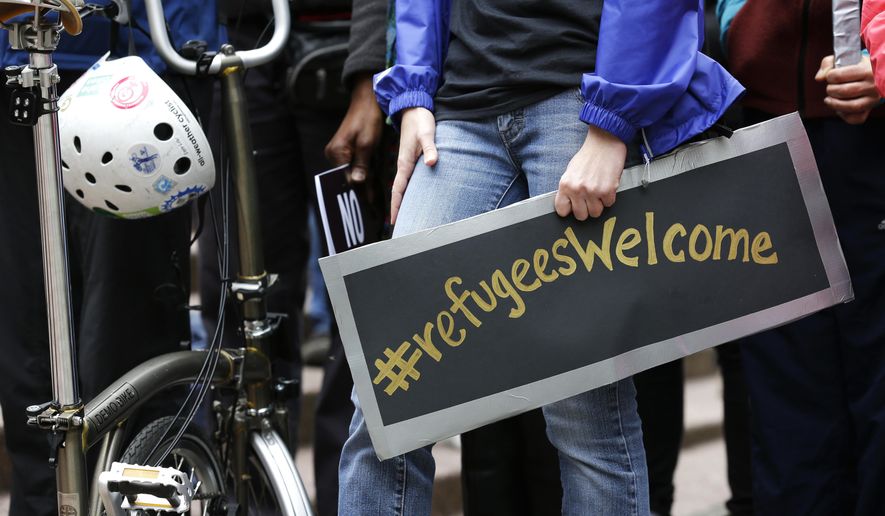The Trump administration informed Congress on Wednesday that it will cut the annual refugee cap to 45,000 for fiscal 2018, marking the lowest number on record.
It’s a massive cut from this year, when President Obama set the cap at 110,000 — though President Trump, who took over four months into the fiscal year, will end up with a much smaller final number for 2017.
The refugee cut is another reflection of the new president’s approach to immigration, where his administration has taken a better-safe-than-sorry approach, saying that until screeners can be sure of their vetting procedures, the country should tread carefully.
Immigrant-rights groups and refugees said they were appalled at the cuts, calling it a dereliction of American moral authority.
“At a time when our world is facing the worst refugee crisis in history, it is unconscionable that the Trump administration is setting the lowest refugee ceiling in history,” said Senate Minority Whip Richard J. Durbin, Illinois Democrat.
But the State Department said at 45,000, the U.S. will still be the world leader in refugee resettlement. Canada ranks second with about 25,000 refugees expected in 2018.
Department officials also portrayed the lower U.S. number as a chance to catch up on a huge backlog of asylum cases already in the country.
Refugees are those who request protections from outside the country, while asylum requests are from those who’ve already made it to American soil. The same officers often decide both kinds of cases.
“We have hundreds of thousands of individuals who are making these requests domestically, and we need to be able to devote resources to begin processing those cases,” a department official said in briefing reporters Wednesday.
The annual refugee cap was established by a 1980 law that gives the president the power to decide an upper limit for admissions in any given year.
The cap has never before been set below 67,000 — though in the early 2000s, despite a higher cap, fewer than 30,000 refugees were actually accepted in several years.
Under the 1980 law, the president is required to consult with Congress before setting the cap.
Fiscal 2018 begins Sunday, and both Republicans and Democrats said the consultation this year came far too late — and didn’t result in any meaningful give-and-take.
“Since August, our offices have made bipartisan requests to the State Department on this meeting,” said Sens. Charles E. Grassley of Iowa and Dianne Feinstein of California, respectively the top Republican and Democrat on the Senate Judiciary Committee.
“Congress and the law require real engagement on this important subject. An eleventh-hour meeting to check a legal box is not sufficient,” the two senators said.
Refugees have become a controversial issue in recent years after the Obama administration raised the caps and set particular targets for accepting and resettling refugees from Syria, amid the civil war raging there.
The Obama decision came even as top security experts said the U.S. couldn’t be certain of the identities and backgrounds of refugees from that country, posing a potential security threat.
Mr. Trump, as a presidential candidate, repeatedly blasted the Obama administration’s decisions and said the U.S. needed a time out to get a handle on the situation.
• Stephen Dinan can be reached at sdinan@washingtontimes.com.




Please read our comment policy before commenting.